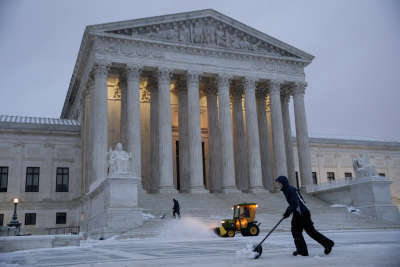WASHINGTON — Below freezing temperatures expected this week could destroy a significant portion of the cherry blossoms now forming along the Tidal Basin.
“We’re looking at deep frost for the next three nights,” said Mike Litterst, spokesman for the National Park Service. “A couple nights we’re even below 24 degrees. Get to 24 degrees, you’re going to experience 90 percent loss of blossoms.”
Peak bloom is expected sometime between March 19 and March 22. Peak bloom is defined as the day when most of the Yoshino cherry trees around the Tidal Basin are blossoming. Seventy percent of all the trees along the basin are Yoshino.
The trees, buds and blooms appear to have weathered with little damage a late-winter storm that lashed rain, sleet and snow over the D.C. region Monday night into Tuesday, Litterest said.
Despite the fate of the Yoshinos, the Kwanzan cherry trees could still provide a pretty spring display.
Kwanzans are the second most abundant Tidal Basin cherry tree variety. They bloom later in the season, are less developed now and are not as vulnerable to a deep freeze as the Yoshinos.
“Regardless of what happens with the Yoshinos, we’re going to go back up to seasonal temperatures this week. Everything still should be on track for the Kwanzans. We’re looking for them on or about April 11,” Litterst said.
(See images of the 11 types of cherry trees that bloom along the National Mall on the National Park Service site.)
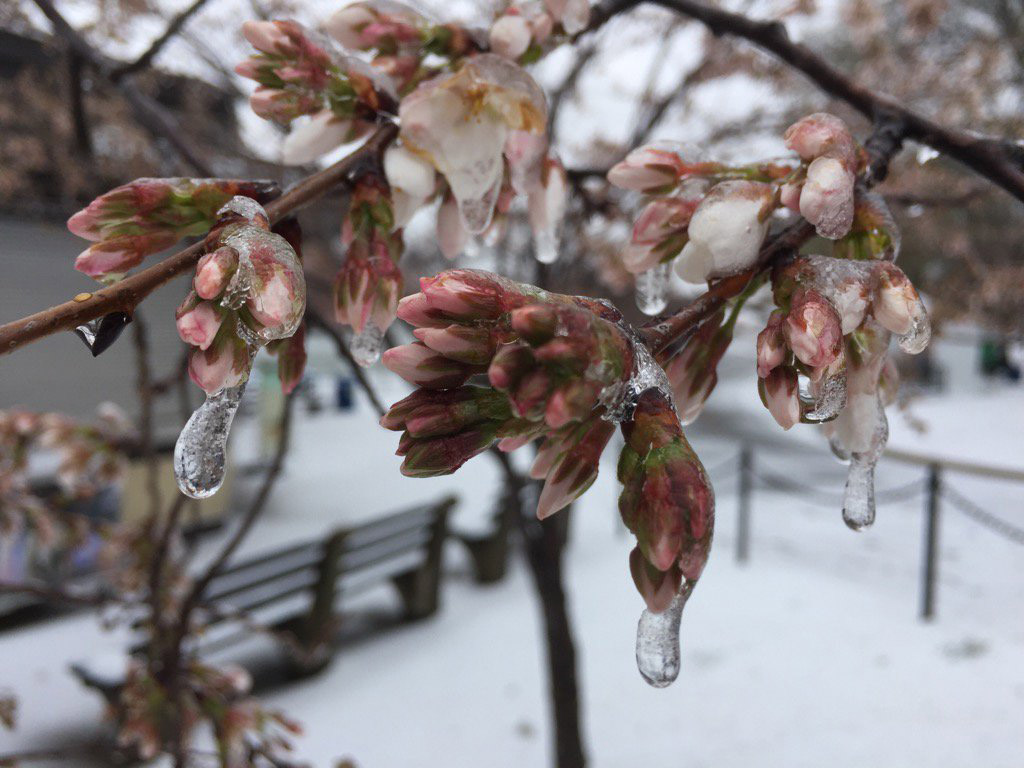
Yujin, Linsie & @aaron_ojard of Frederick, Md. frolicking on the@NationalMallNPS Tidal Basin #WTOP #SNOW pic.twitter.com/pXqaxonPL6
— Kristi King (@kingWTOP) March 14, 2017
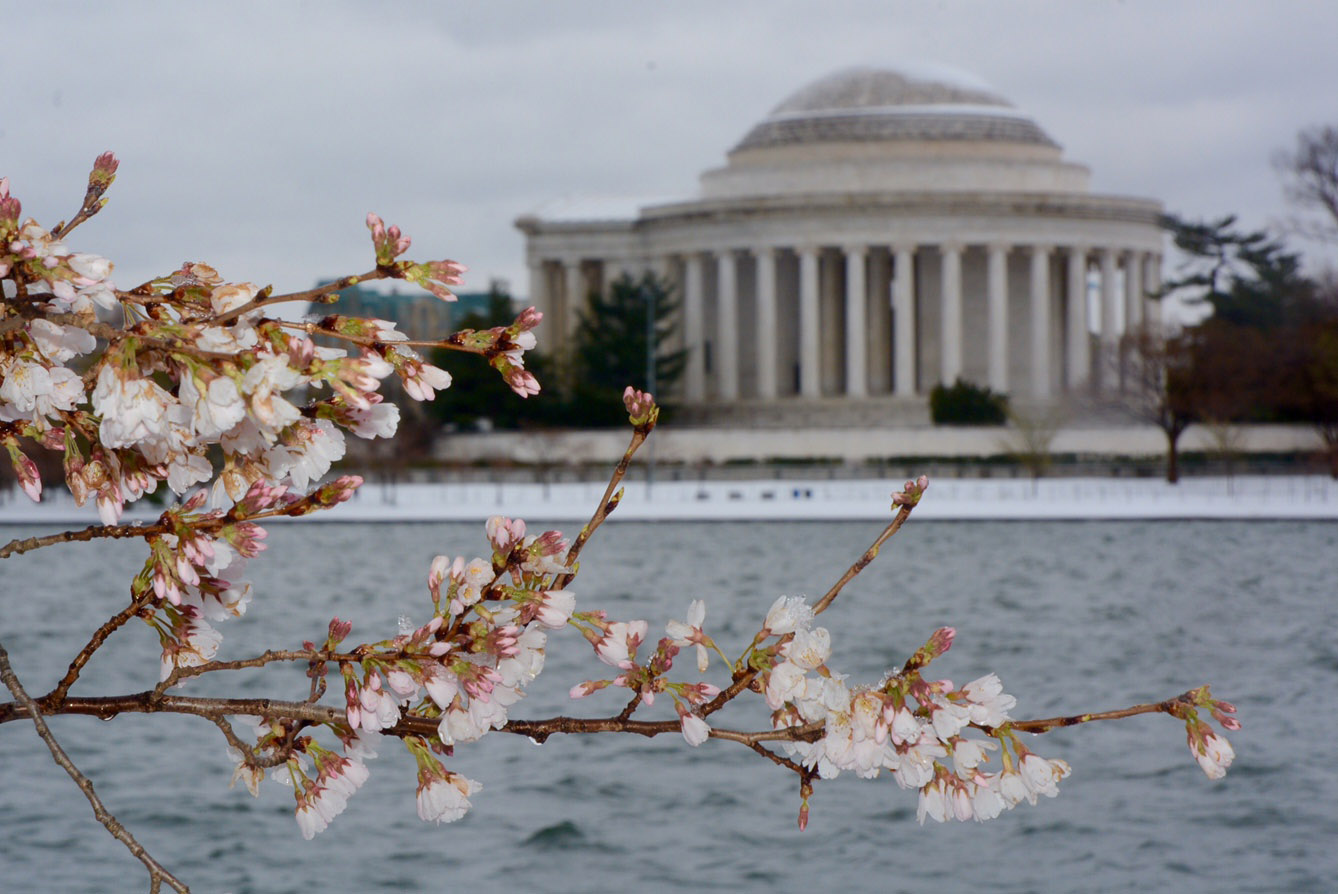
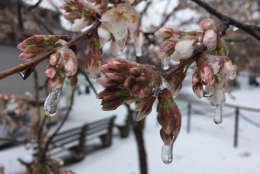
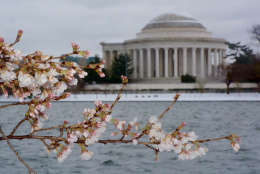
The winter storm has also delayed the opening of the Tidal Basin Welcome Center. Instead of opening on Wednesday as scheduled, the center will now open on Saturday, Litterst said.
“We’ll still have three weeks of events and fun and festivities to welcome spring back to the nation’s capital regardless of where the blooms are,” Litterst said.
The National Cherry Blossom Festival runs between March 18 and April 15.


